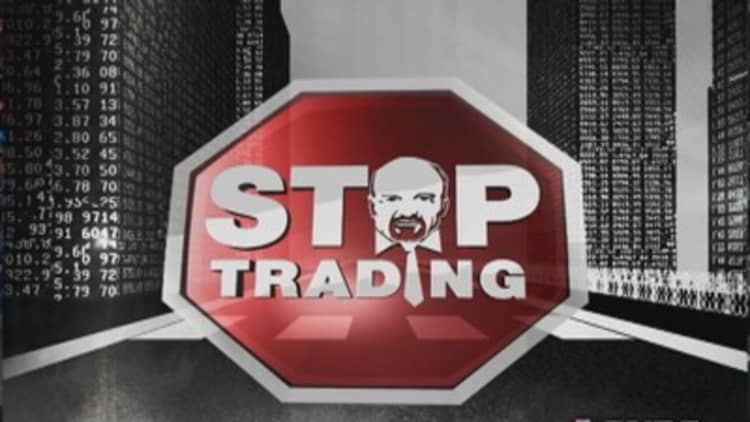They're both popular with shoppers, sell luxury products at an affordable price and occupy the same space in consumers' closets.
As such, it's hard for investors not to draw comparisons—or choose a favorite—between the two growing accessories and apparel labels, Michael Kors and Kate Spade.
In the latest round of head-to-head competition, Citi analysts evaluated the two companies to determine which offers more upside to investors. In the end, analysts Kate McShane and Oliver Chen chose the brand that they concluded has more room for margin growth as well as opportunities to build its market share: Kate Spade.
"We believe Kate Spade is likely the next major global lifestyle brand," the analysts wrote in a research report. "In addition to a lack of blatantly logoed product, we believe Kate's classic/preppy feminine look with a dash of fashion fits well with its core consumer's shopping trends while avoiding significant fashion risk."
Read MoreWhy Kors is out and Kate Spade is in
Although Kors is farther along in its expansion and has a larger hold on the market than Kate—it grew its global share in the handbag market to 1.66 percent in 2012, compared with Kate Spade's 0.4 percent market share, according to the most recent data from Euromonitor—Kate is expected to expand its physical footprint at a faster clip.
With only 169 stores, Citi expects Kate Spade to increase its square footage by an average 25 percent annually over the next three years. It expects Kors to expand its network of 395 stores by about 15 percent. These estimates include forecast growth in both brands' international fleets, as each attributes only a small percentage of its revenue to overseas (20 percent for Kate and 15 percent for Kors).
"Both brands still have significant runway for global retail store expansion," the report said.

But there are also prospects for each company to grow domestically. In North America, Kors ranks third among the top 10 handbag brands in terms of sales, at 9 percent, while Kate ranks eighth at 2.2 percent. Though sales have fallen off in the past two years, Coach still leads the category with a substantial 22 percent share of the market.
Read MoreGucci who? Michael Kors gains ground in Europe
Last month, Barclays issued a report on the opportunities U.S. luxury brands face compared with their typically higher-priced global competitors. It predicted that U.S. luxury companies will outperform the global luxury space from 2013 to 2016, offering significant room for both Kors and Kate.
Aside from these opportunities, Citi said Kate Spade stands to gain from its ahead-of-the-curve digital positioning, the potential for licensing in new categories and a new pricing strategy that includes more handbags at opening price points around $200, as well as more expensive price tags on the higher end of its assortment.
Still, the analysts did not count out Kors. They noted that the label was the most preferred handbag brand among nearly half the responses in one of Citi's recent national surveys. They also highlighted the company's potential to grow its men's business to $1 billion, from an estimated $300 million, as well as an opportunity in e-commerce, which is currently outsourced to luxury department store Neiman Marcus.
Read MoreBurberry still a hit, currency headwinds loom
And although Citi expects the brand's same-store sales growth to moderate, it still predicts they will increase between 15 percent and 20 percent through the year ending in March 2015. It predicts Kate Spade will also continue to grow its comparable-store sales by double digits through the same time period.
"We still expect Kors to achieve and beat guidance, but to a lesser extent than historically," the report said.
Citi has a target price of $42 on Kate Spade, which is currently trading near $34. It set a $107 target on Kors, which is currently trading around $92.
—By CNBC's Krystina Gustafson.


